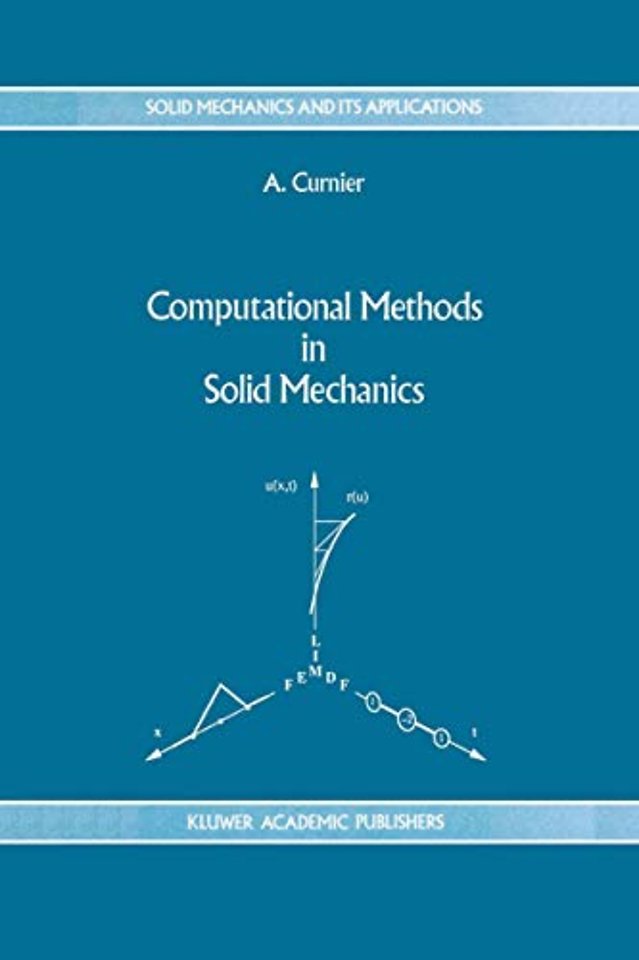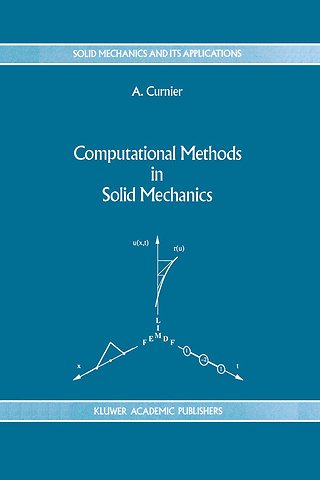Computational Methods in Solid Mechanics
Paperback Engels 2012 1994e druk 9789401044868Samenvatting
Summary This bookis an introdU(;tion to the three numerical methodsmost commonly used for the mechanical analysisof deformable solids, namely: • the finite element method(FEM), a particularcaseofGalerkin's method, for the spatial discretisationofsolids; • the linear iteration method(LIM), a generalizationofNewton's method, for solving geometricandmaterial nonlinearities; • the finite difference method (FDM), in fact Newmark's method, for the temporal discretisation oftheproblem. The main reason for this selection is the degree of generality reached by the computerprograms basedon the combinationofthese methods. The originalityofthepresentation lies in the comparable emphasisputon the spatial, temporal and nonlinear dimensions of problem solving. For each dimension, there corresponds one method whose basic principle is exposed. It is then shown how they can be combined in a compact and flexible fonn. Thisjoint investigationofthe three methods leads to a particularly neat global algorithm. It is with this double objectiveof simplicity and unity in mind that this book has been designed. An outline of the book follows. A one-dimensional bar model problem, including all the ingredients necessary for acompletepresentationofthe addressed methods, isdefined in Chapter1. Emphasis is placedon the virtual work principle as an alternative to the.differentialequation ofmotion. Chapters 2, 3 and 4 present the three numerical methods: FEM, LIM and FDM, respectively. Although the presentation relies on a one-dimensional model problem, the fonnalism used is general and directly extendible to two- and three-dimensional situations. The compact combination of the three methods is discussed in detail in Chapter 5, which also contains several sections concerning their computer implementation.
Specificaties
Lezersrecensies
Inhoudsopgave
Rubrieken
- advisering
- algemeen management
- coaching en trainen
- communicatie en media
- economie
- financieel management
- inkoop en logistiek
- internet en social media
- it-management / ict
- juridisch
- leiderschap
- marketing
- mens en maatschappij
- non-profit
- ondernemen
- organisatiekunde
- personal finance
- personeelsmanagement
- persoonlijke effectiviteit
- projectmanagement
- psychologie
- reclame en verkoop
- strategisch management
- verandermanagement
- werk en loopbaan

